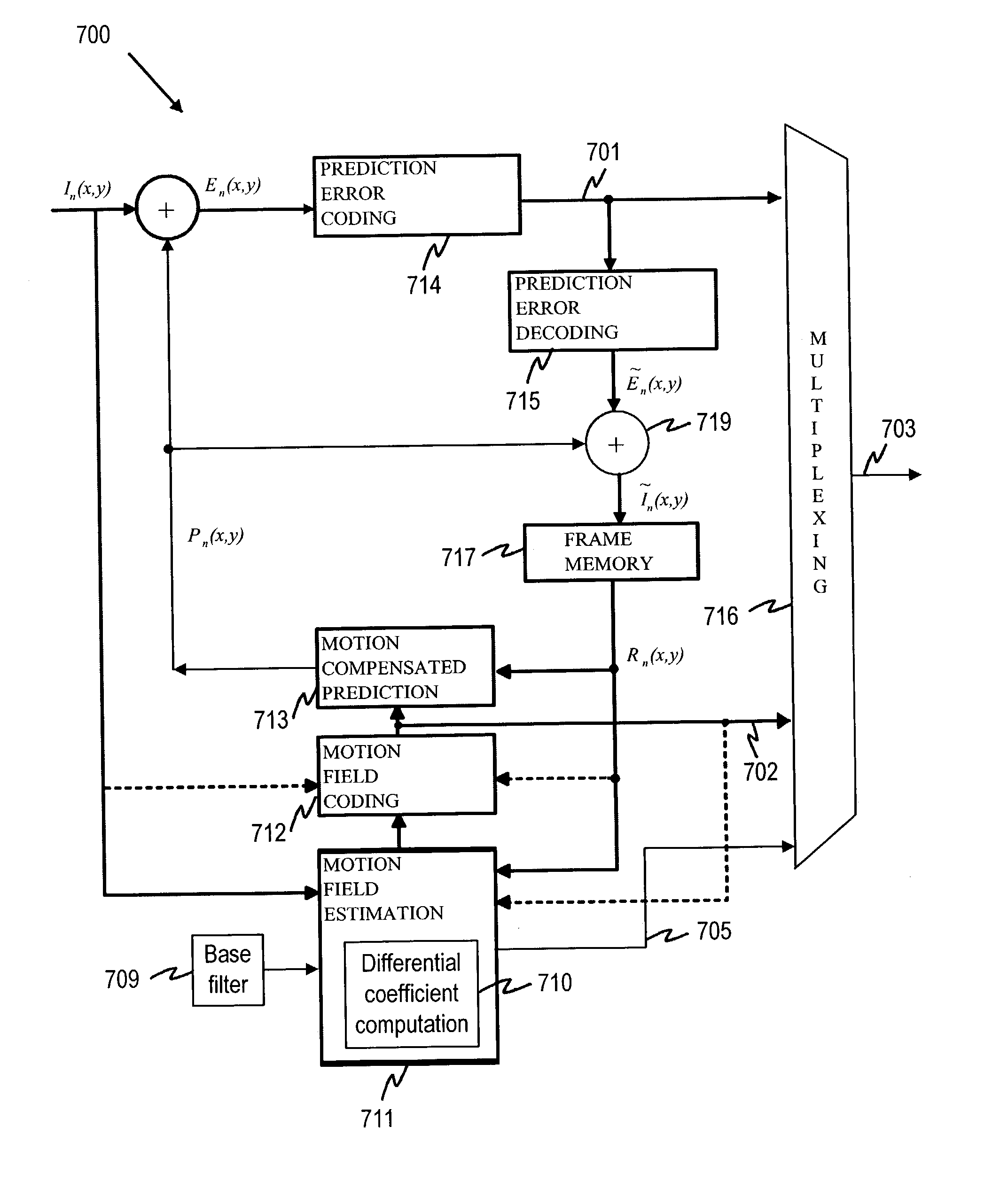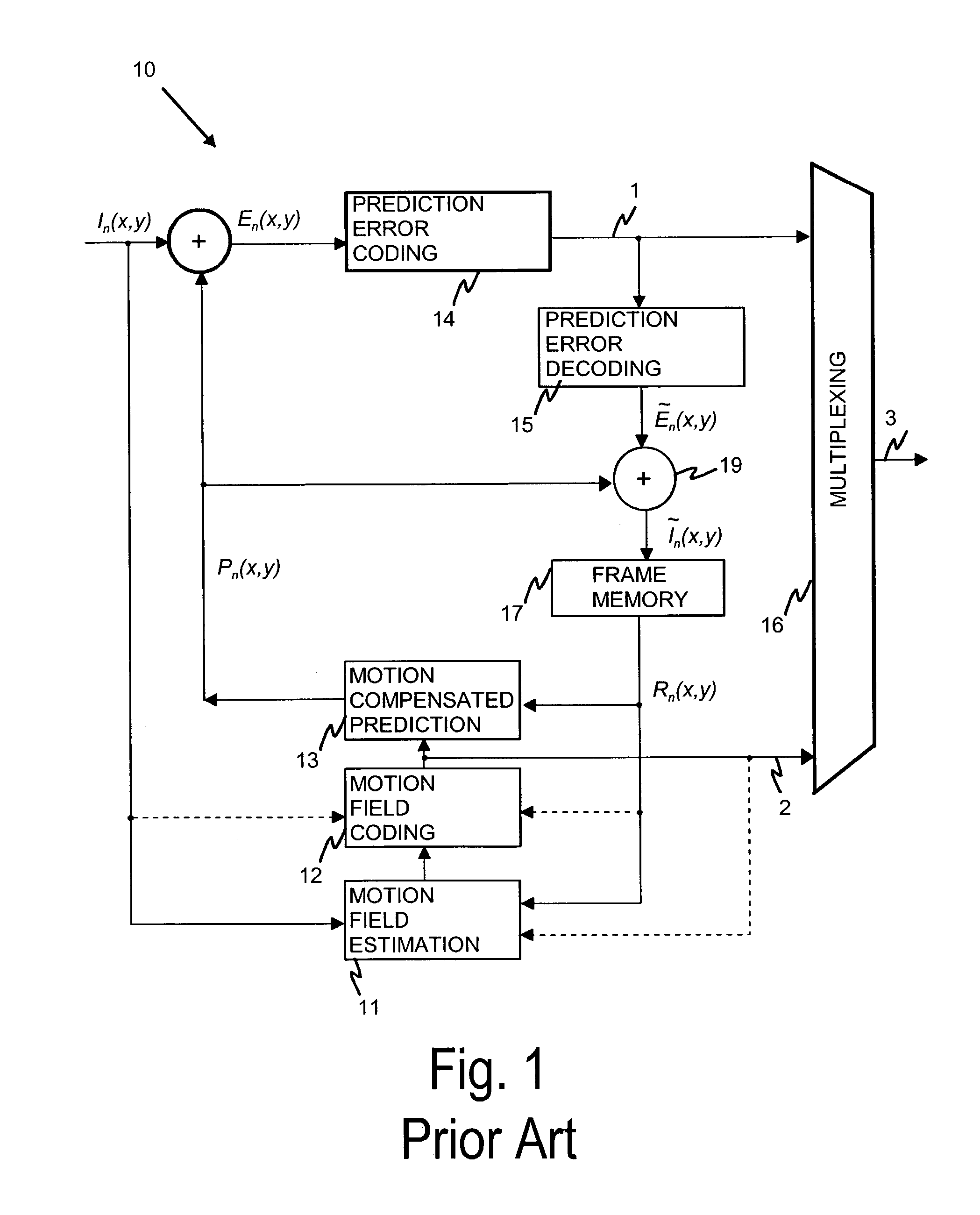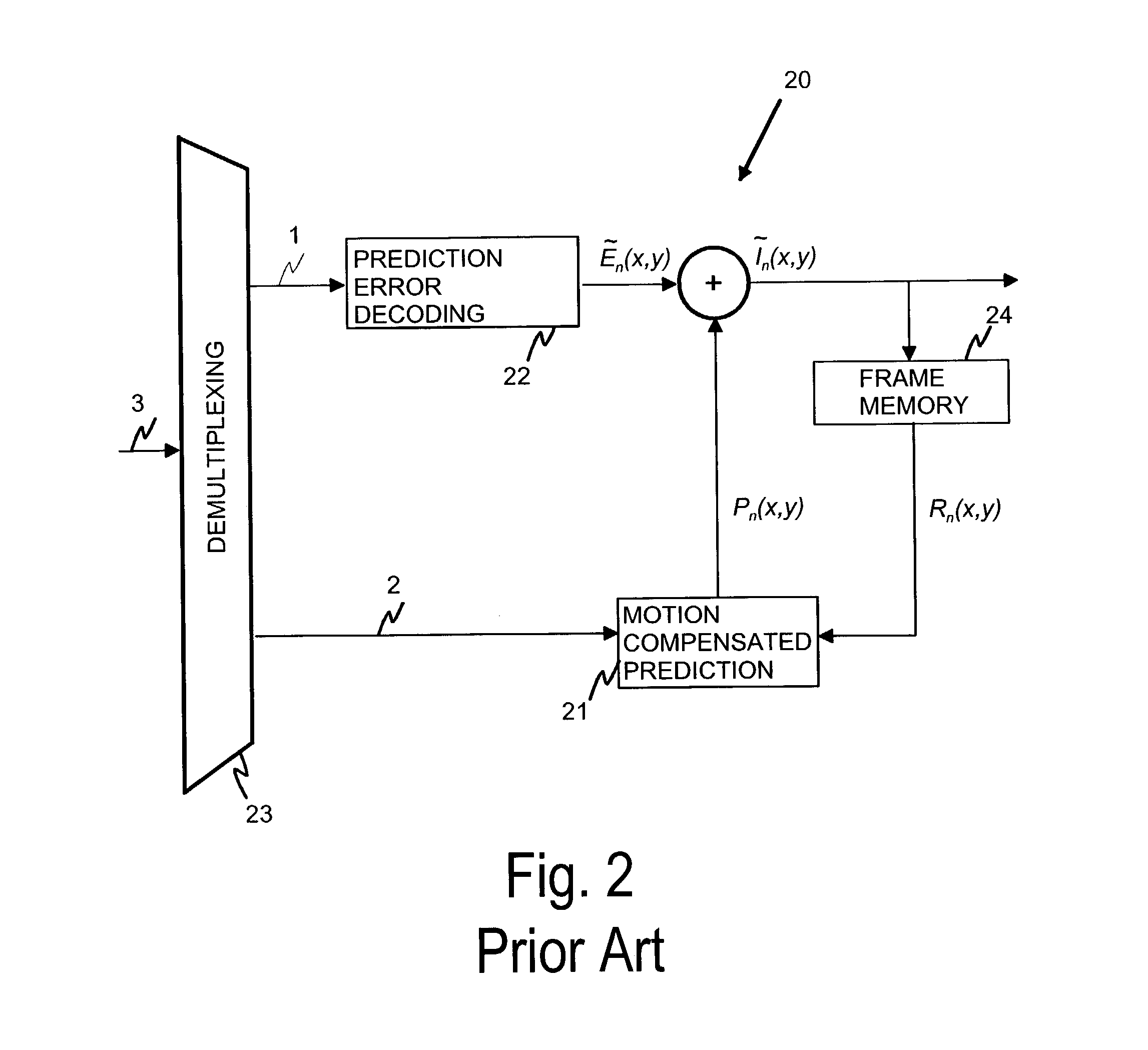Differential coding of interpolation filters
a filter and interpolation technology, applied in the field of motion compensation in video coding, can solve the problems of impracticality of data rate for video recording, transmission and display applications, and inability to achieve sufficient compression. good
- Summary
- Abstract
- Description
- Claims
- Application Information
AI Technical Summary
Benefits of technology
Problems solved by technology
Method used
Image
Examples
Embodiment Construction
[0096]The encoder, according to the present invention, codes filter coefficients differentially with respect to predefined base filter coefficients. FIGS. 6a-6c illustrate the method according to the present invention. The bar graphs presented in FIG. 6a are representative of interpolation filter coefficient values, each bar corresponding to one of the filter coefficients. The height of a bar represents the respective coefficient value, bars extending above the horizontal axis representing positive coefficient values, bars extending below the horizontal axis, negative coefficient values. Referring to FIG. 6a and FIG. 6b, the bar graph 110 represents the filter that the encoder detects to be best suited for motion interpolation of a selected image segment, while the bar graph 140 represents the base filter. In the example shown in FIG. 6a, the filter is a 6-tap symmetric filter having 6 filter coefficients. Instead of sending the filter coefficients as such, only the differences 130 ...
PUM
 Login to View More
Login to View More Abstract
Description
Claims
Application Information
 Login to View More
Login to View More - R&D
- Intellectual Property
- Life Sciences
- Materials
- Tech Scout
- Unparalleled Data Quality
- Higher Quality Content
- 60% Fewer Hallucinations
Browse by: Latest US Patents, China's latest patents, Technical Efficacy Thesaurus, Application Domain, Technology Topic, Popular Technical Reports.
© 2025 PatSnap. All rights reserved.Legal|Privacy policy|Modern Slavery Act Transparency Statement|Sitemap|About US| Contact US: help@patsnap.com



